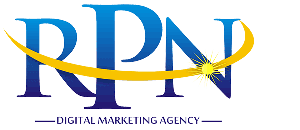
Direct, Push and Native Advertising
Attention is valuable and is the currency that advertisers are fighting for in their digital marketing strategies. In 2019 alone, brands and businesses around the world spent more than $5 trillion to promote their offerings to their audience.
There is an increasing lack of attention. Overwhelmed by the constant intrusive advertising, consumers around the world are increasingly ignoring them. This is a phenomenon known as the "banner blind," in which one-quarter of US consumers, or 70 million, completely block ads. According to a
Research Gate survey, consumers "expect a negative experience, the ad is irrelevant to the user, the user is skeptical of the ad message, or the consumer is skeptical". You are more likely to abandon online advertising.
"How can advertisers overcome these challenges?
Advances in Adtech and MarTech (marketing technology) allow businesses to maintain the overall feel and experience of a particular platform. You can now create relevant, unobtrusive ads. These ads are called native ads and set new boundaries for your ads.

Native ads and push notifications.
Native ads are often delivered to desktop or mobile devices in an "under article" format similar to the rest of the content on the page. Each native ad provider also offers additional formats and placements, such as Sidebar Recommendations, exit pop-ups, and other creative options.
Native ads are essentially less disturbing than traditional ads, are easier to use, and can generate a higher level of engagement. This explains the new popularity of digital marketing. In fact, the growth of native ads in online spaces has outpaced traditional banner ads over the last five years and can even completely replace traditional banner ad placement.
In addition to the native ad format, "push notification" marketing has been developed. These ads are served as mobile notifications or desktop reminders that appear on your screen. Push network marketing has also experienced explosive growth in recent years, helping businesses reach new audiences in innovative and exciting ways.
These two advertising strategies can have some surprising consequences for businesses learning how to use them properly, especially when combined.
Important Disclosure Notes
By law, native ads that appear as proposed content must be flagged as "sponsored content." This is to indicate that it is non-organic website content. However, the ads look the same as the platform they are displayed on, so despite this disclosure, they appear to be less disturbing than traditional banners.
And because of the continued growth of this marketing segment, they seem to work for both websites and advertisers.








































